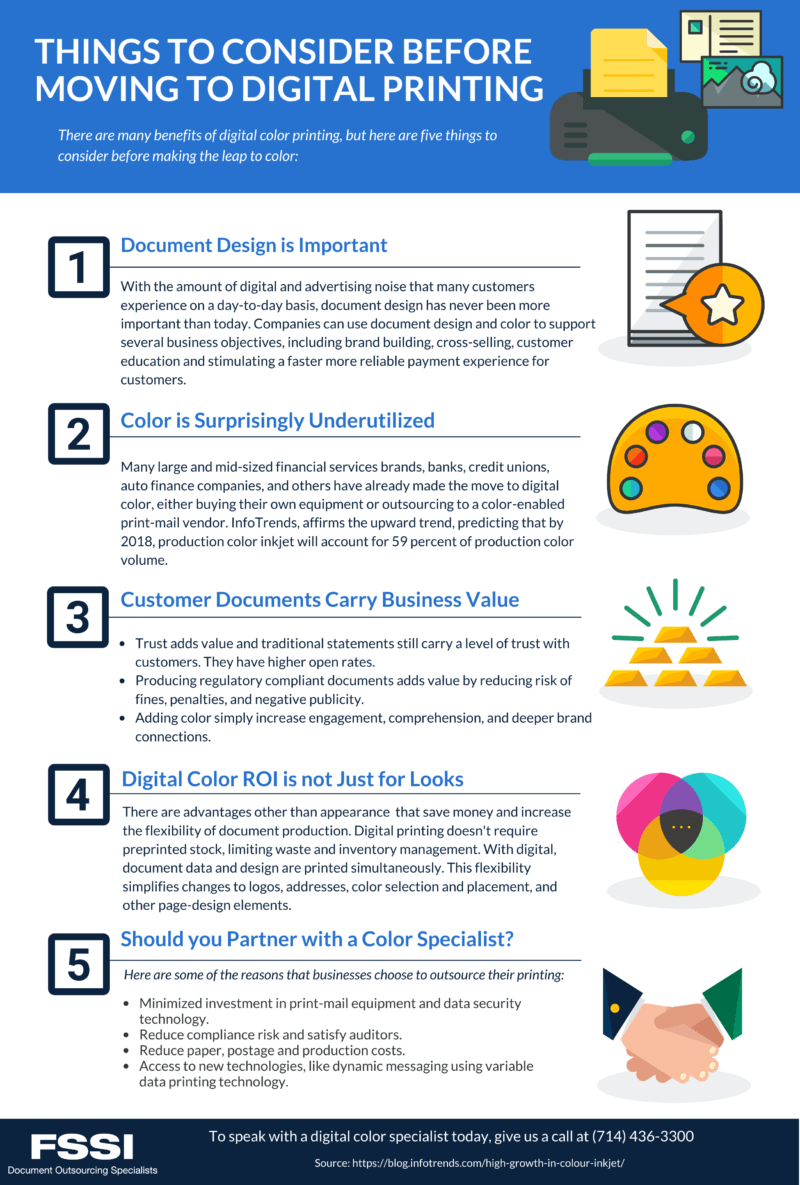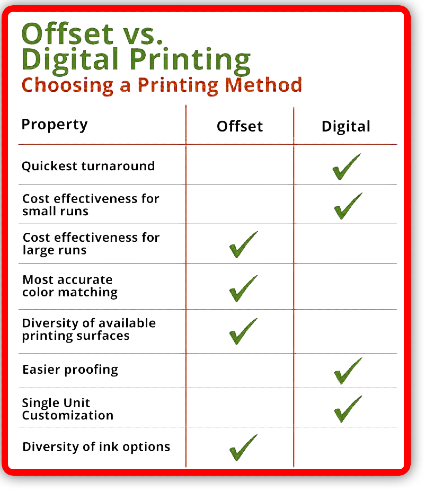More About Digital Printing
More About Digital Printing
Blog Article
The Buzz on Digital Printing
Table of ContentsThe 25-Second Trick For Digital PrintingWhat Does Digital Printing Mean?Digital Printing - TruthsDigital Printing - An OverviewHow Digital Printing can Save You Time, Stress, and Money.The 30-Second Trick For Digital Printing
Variable data printing, such as direct mail with individualized codes and addresses, is ideally matched for digital printing. Digital fast printing just needs 4 steps of layout, testimonial, printing and binding to get whatever done. Digital quick printing has an unparalleled benefit: print on demand.According to PMMI, electronic printing permits brands and makers to react promptly to consumer demands while boosting the supply chain, decreasing warehousing cost and waste, and enjoying faster time to market. That all sounds terrific, yet just how does this modern technology do all that? The significant differentiator of these technologies is that there are no set up charges and no plates with electronic printing.
Digital Printing Things To Know Before You Buy
According to Wikipedia, the best difference between digital printing and typical approaches such as lithography, flexography, gravure, or letterpress - Digital Printing is that there is no need to replace printing plates in electronic printing, whereas in these analog printing techniques home plates are continuously replaced. This causes quicker turn-around time and lowers expense when utilizing digital printing.
Digital printing is very versatile, so it's easy to make changes to the bundle layout quickly. It all goes back to the plates.
More supply can indicate more waste down the road. With standard printing techniques, short-run printing is just not feasible. Due to the fact that a wonderful design can make or break your product, electronic printing constantly develops high-grade, clear and vivid graphics each time. Digital printing on versatile bags includes the intense, vivid, and specific graphics that virtually beckon consumers to get to out and touch them.
Digital printing is the process of printing digital-based pictures directly onto a selection of media substratums. There is no need for a printing plate, unlike with balanced out printing. Digital files such as PDFs or desktop computer posting data can be sent out straight to the electronic printing machine to print on paper, image paper, canvas, textile, synthetics, cardstock and other substrates.
Some Known Questions About Digital Printing.
According to PMMI, digital printing permits brands and suppliers to respond quickly to customer demands while improving the supply chain, lowering warehousing cost and waste, and taking pleasure in faster time to market. That all audios excellent, however just how does this innovation do all that? The significant differentiator of these technologies is that there are no set up charges and no plates with electronic printing.
This results in quicker turnaround time and site link decreases cost when using electronic printing.

Digital Printing Fundamentals Explained
With traditional printing techniques, short-run printing is just not possible. Due to the check this site out fact that a fantastic style can make or damage your item, digital printing consistently produces high-grade, clear and vibrant graphics each time.

According to PMMI, digital printing enables brands and suppliers to respond promptly to client needs while boosting the supply chain, minimizing warehousing cost and waste, and enjoying faster time to market. That all noises wonderful, however just how does this innovation do all that? The significant differentiator of these technologies is that there are no set up charges and no plates with digital printing.
Some Known Details About Digital Printing
According to Wikipedia, the best difference between electronic printing and conventional approaches such as lithography, flexography, gravure, or letterpress is that there is no need to replace printing plates in digital important source printing, whereas in these analog printing techniques home plates are consistently replaced. This leads to quicker turnaround time and reduces expense when making use of electronic printing.
Rapid production suggests obtaining your product to market faster. It likewise suggests it's less complicated and faster to make modifications later on, when you change a recipe, add a SKU, or create seasonal packaging. Digital printing is highly flexible, so it's easy to make changes to the plan layout swiftly. Everything goes back to the plates.

All About Digital Printing
Digital printing is the procedure of printing digital-based images directly onto a variety of media substratums. There is no requirement for a printing plate, unlike with countered printing. Digital files such as PDFs or desktop computer posting files can be sent straight to the electronic printing press to publish theoretically, photo paper, canvas, material, synthetics, cardstock and various other substratums.
Report this page